All about the creeping tenacious
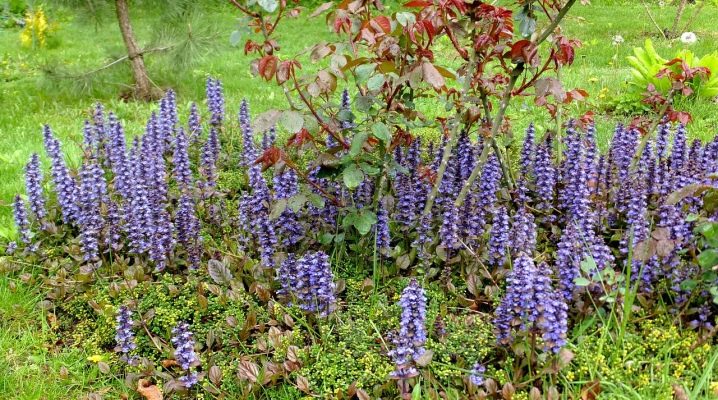
Those who know everything about the tenacious creeping gardeners can count on impressive success when growing this plant. In addition to its general description, information about planting and care in the open field will be useful to them. And also it is worth studying information about the popular varieties of creeping tenacious and about its use in landscape design.
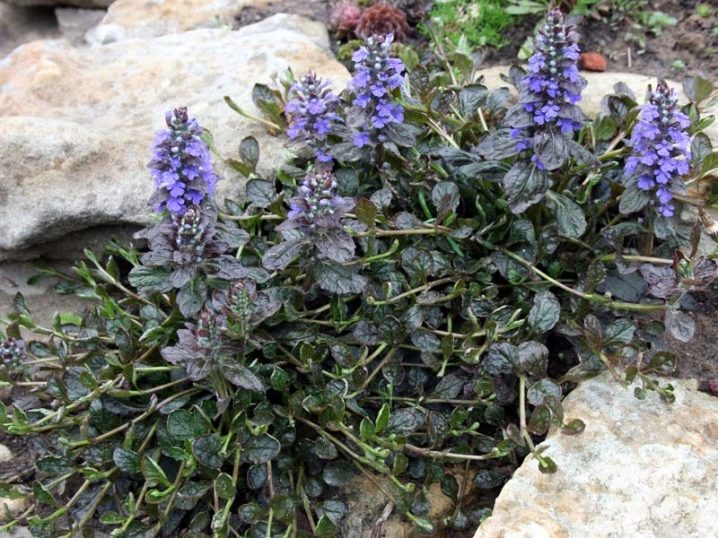
Description of the plant
The tenacious creeping (ayuga) refers to the genus of tenacious, which is a member of the family of lacustrine and lucid-colored order. Therefore, from a botanical point of view, the relatives of this species are:
-
basil;
-
monard;
-
mint;
-
oregano;
-
budra;
-
sage;
-
thyme;
-
motherwort.
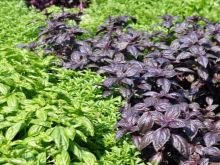

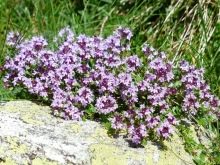
In some materials, this plant appears under the name of a gourd or neck. It is considered a reference within a kind and is very often cultivated artificially. The life form of the creeping tenacious is grass. It is characterized by development over several years.
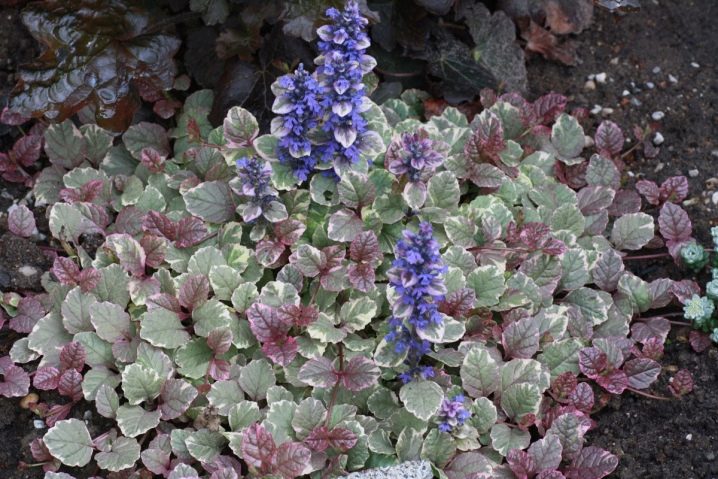
The standard Latin name is Ajuga reptans.
It is worth noting that, in addition to the name in Latin, it also has a number of everyday synonyms, in addition to those already mentioned:
-
oak tree;
-
unmindful;
-
unfading;
-
Vologodka;
-
Dubrovka.
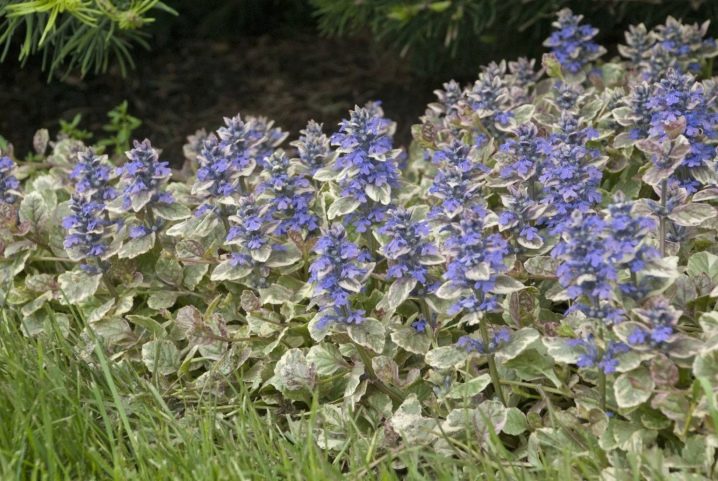
The tenacious creeping is typical for wooded areas, mainly for deciduous forests. You can meet her in glades and forest edges, as well as in places overgrown with bushes. The habitat of this species occupies almost the entire geographic Europe. It also includes the European part of the Russian Federation and the North Caucasus. Additionally, the creeping tenacious inhabits Iran, Turkey, Tunisia and Algeria, part of Azerbaijan and Georgia.
The polymorphic nature of the species often leads to sharp differences in pubescence. Shoots are mostly creeping, but sometimes this is uncharacteristic. Differences may relate to the time when the culture blooms, the colors of foliage and corollas. The creeping rhizome is relatively short. The leaves are relatively soft and look like a scapula or oval.
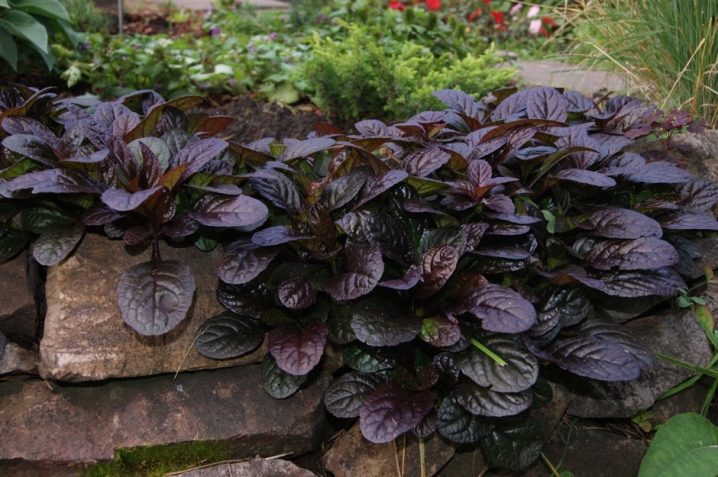
Their edge is always wavy, has notches or short denticles. The foliage is covered with a short downy, either on both sides, or only on the upper side. The leaves developing near the root are grouped into rosettes with a total size of up to 8 cm. From these rosettes grow long creeping "whiskers", just giving the common name to the whole genus. With the onset of spring, flower-bearing stems of a tetrahedral shape, reaching a height of up to 35 cm, will develop from under the rosettes.
Rosette foliage has elongated petioles. The one that grows on stems is of the sedentary type. The bracts are visually similar to an egg and have a solid structure. Those below the flowers exceed them in length, and those that are higher are inferior.

Rosette foliage will persist during flowering, drying is unusual for it.
The root system of Ayuga is located in the upper soil layer. That is why such a culture is spreading so quickly. However, the flip side of this advantage is high sensitivity to drought and the likelihood of mechanical damage to the roots. Inflorescences of the classic spike-like type are quite spectacular.
The flowers have a two-lipped structure. They develop in the leaf axils and are grouped in whorls of 6-8 pieces. The flower cups are pubescent. Their length reaches 0.7 cm, and the cups themselves are bell-shaped. The corolla can be purple, blue or cyan.
When the plant fades, the corolla does not fall off, it remains on the fruits. 4 stamens are grouped under the upper lip. The creeping tenacious is pollinated by bees. With long rains, the plant can self-pollinate in small, closed flowers.In central Russia, this culture blooms in April, May, June and July. The ripeness of the fruits (light brown many-roots) is achieved at different times during the summer.
The melliferous properties of the creeping tenacious are frankly weak. Bees fly to it only when there are problems with better quality honey plants. Breeders have bred a large number of varieties within this species.
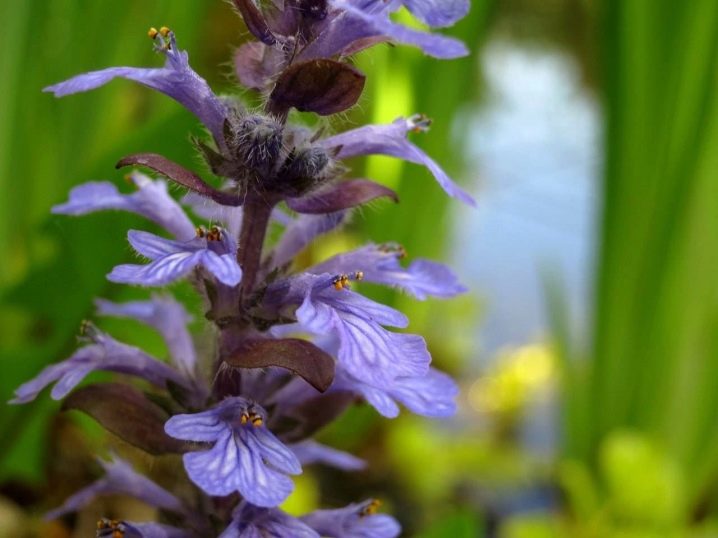
It is worth noting that the creeping tenacious is an evergreen plant. Most often, it grows vertically upward.
Varieties
Atropurpurea
This type looks very beautiful during flowering. But its purple foliage is also distinguished by its high aesthetics. Atropurpurea develops a height of 10-15 cm. Other features:
-
flowering in May and June;
-
the formation of medium-sized blue flowers;
-
shade tolerance;
-
fast formation of dense carpets;
-
preferable for curb plantings and rock gardens.
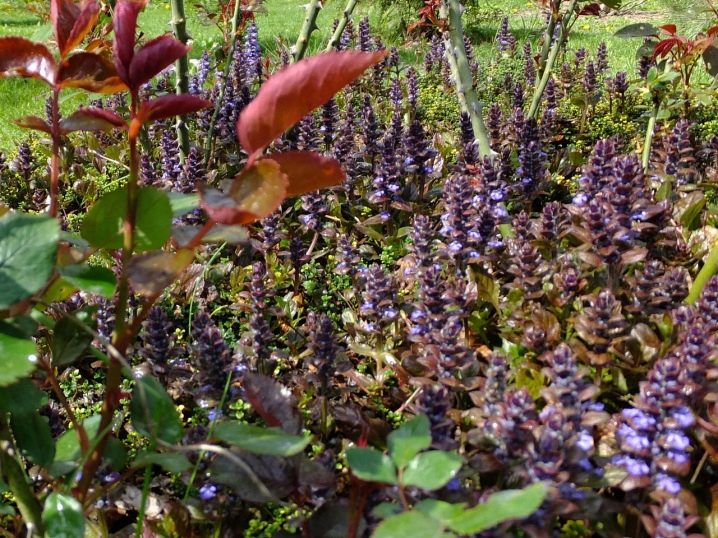
Spackler
This variety produces creeping shoots that are prone to rooting. The height of the stems varies from 10 to 25 cm. The leaves of the basal rosettes taper into long petioles, and the stem foliage has a sedentary structure or is held on short petioles. The notched edges have a subtle waviness. The bracts have a solid structure; their base is usually bluish in color. Height reaches 8 cm, dark green leaves have a characteristic shine.
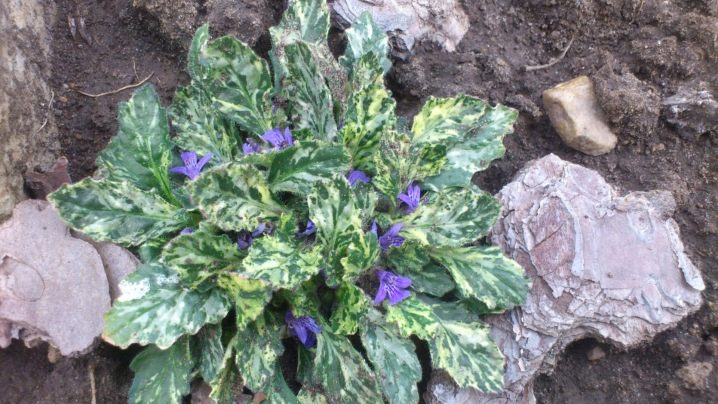
Princess nadia
This ground cover type is extremely good. It is characterized by rapid growth and the formation of a dense carpet with variegated leaves. Young shoots are spectacular due to their pink color. In adulthood, a green-white-cream color of the leaves is noted, sometimes they are covered with pinkish specks.
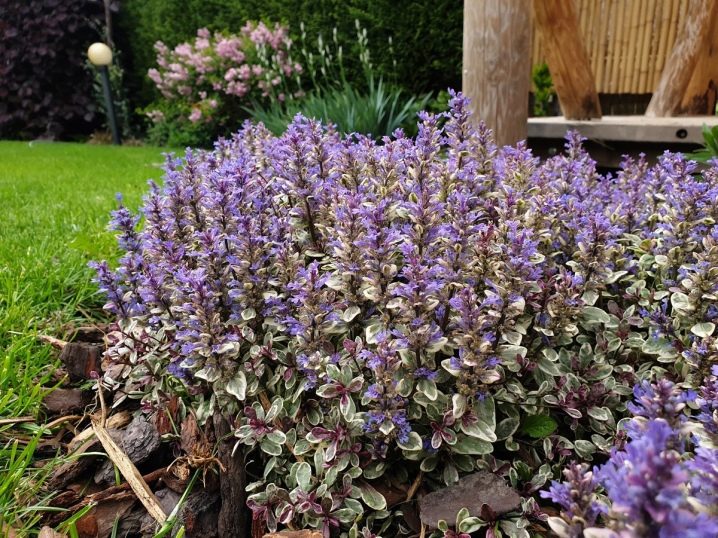
Flowering in May is very abundant, in July this plant will bloom again, but much more modest.
Suga flame
Such a plant is very much appreciated by landscape designers. The rosettes of this survivor reach a maximum of 10 cm in height. The proliferation is pretty fast. The appearance of raspberry-purple and green leaves with a cream edging is characteristic. These leaves themselves are of an evergreen type, but with the onset of spring they are gradually replaced by new ones; the flowers are painted in a blue-lilac tone, and caring for the plant as a whole is very simple.
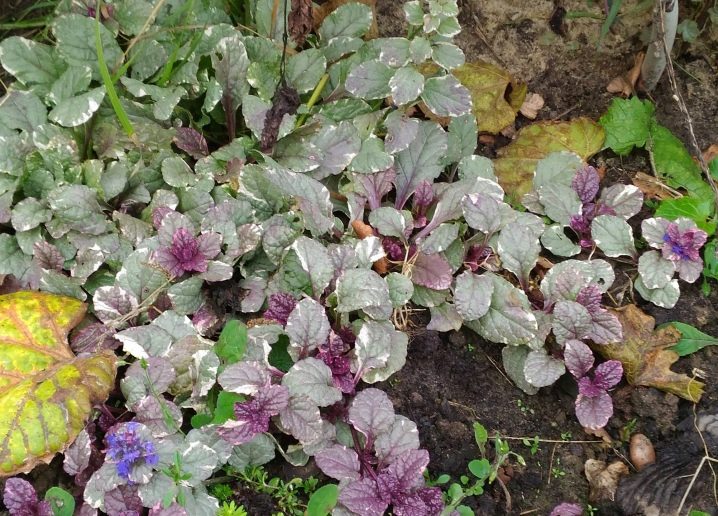
Chocolate Chip
The Latin name for this variety is Chocolate Chip. This tenacious animal has earned its name for its narrow chocolate-colored foliage. The rugs are very low in height. Growth is relatively slow. There is a high level of immunity.
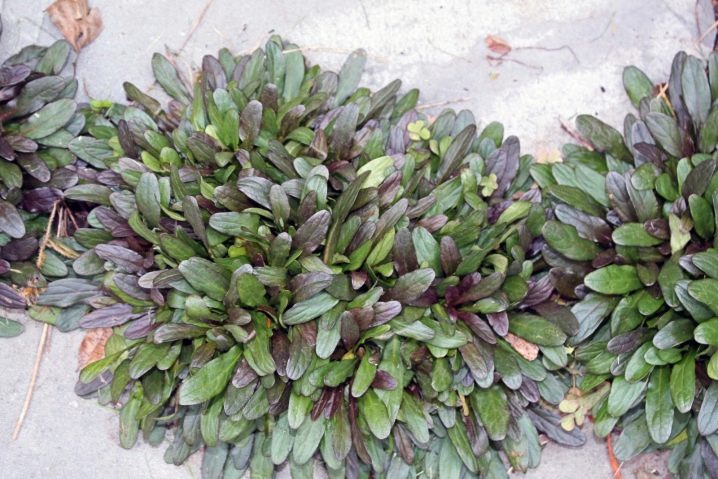
Mahogany
The height of such a creeping survivor is from 10 to 15 cm. The foliage is rounded and reddish-purple in color. And also there are black and burgundy leaves with a characteristic gloss. The flowers are painted in a blue tone, a closed root system is characteristic. The flowering period is in May and June.
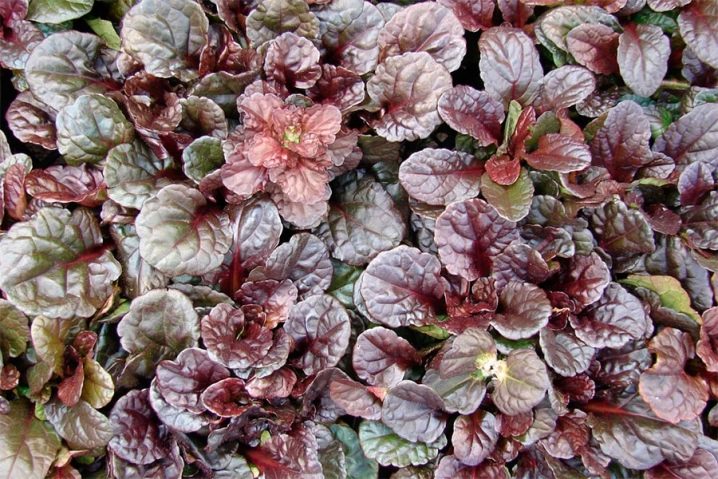
Black scallop
Large foliage with a characteristic gloss is typical for such a plant. The leaves are mostly dark purple in color and have wavy edges. Blue flowers look pretty good. Flowering occurs in May and the first decade of summer, the total height reaches 15 cm.
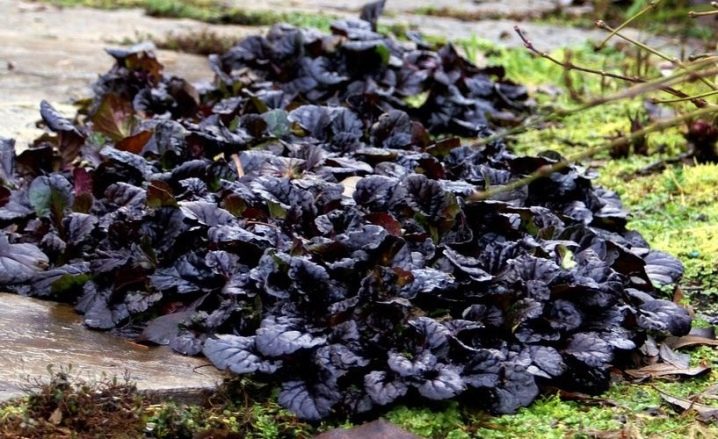
Other
The Blueberry muffin variety has good winter hardiness and blooms during June-July. The crown of this culture has a cross-section of 40 cm. Height - up to 15 (maximum up to 18-20) cm. Flowers are distinguished by lavender-blue color and bronze tint. Other features:
-
weak aroma;
-
development in partial shade;
-
good impression in borders and rock gardens;
-
tall purple-violet petioles.

The Multicolor type is distinguished by its expressive variegation. Like other varieties, creeping tenacious species, it is an evergreen ground cover. The plant has both a bluish and pink, emerald color. The stems rise straight. Flowering occurs at the beginning of summer, and takes an average of 20 days.
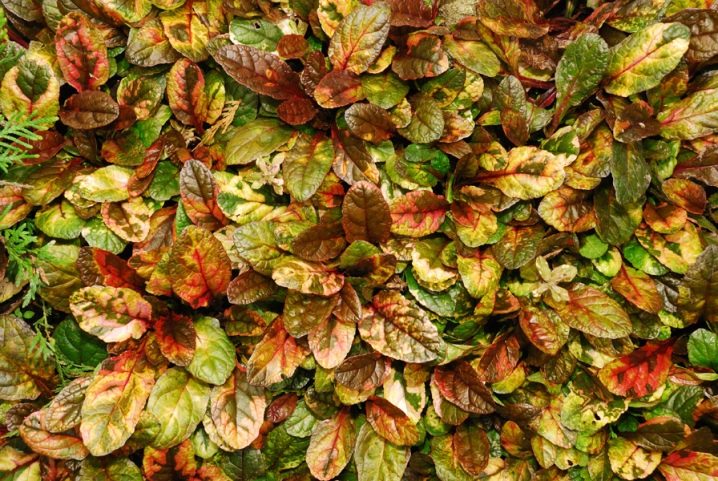
Cutlins Giant produces large, shiny, purple-bronze leaves. It has blue-purple flowers. The plant is suitable for shady gardens.The culture is resistant to cold weather almost throughout Russia. The height ranges from 20 to 25 cm.
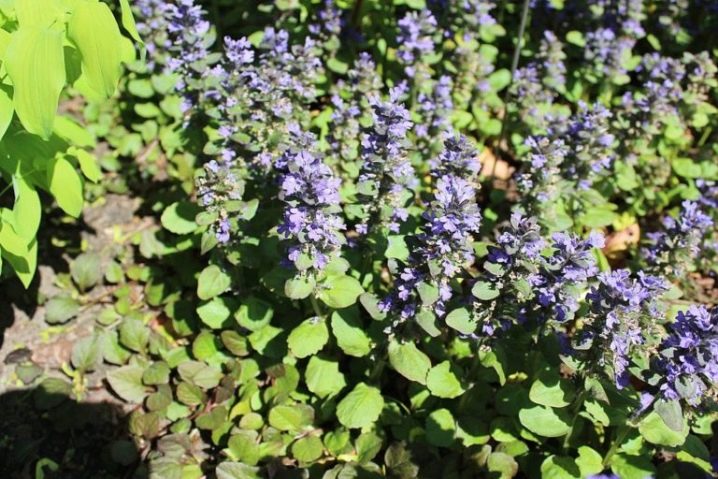
Burgundy Glow is a very beautiful variety. It grows in most parts of central Russia. Flowering occurs in May and June. The color of the leaves may vary.
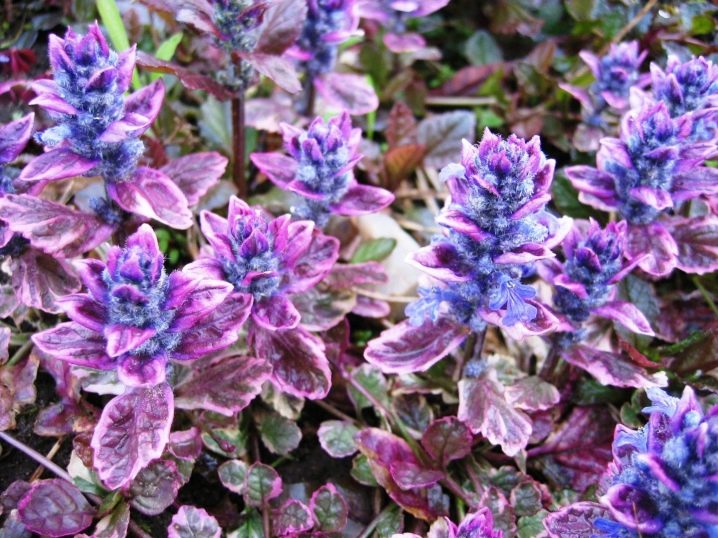
The culture is suitable for landscaping large areas and for rocky gardens.
Planting and leaving
Most often, seeds are sown directly in the open field. For the first sowing, planting material is purchased additionally. It will be extremely germinable. It is necessary to wait until the earth has time to warm up in the spring. Sometimes autumn sowing is carried out - necessarily just before winter itself.
The choice between well-lit and shaded areas is at the discretion of the people themselves. It is allowed to land in the near-trunk area around the tree. However, the most preferable places are with thoroughly cultivated soil or nutritious loam. Before the start of planting work, the territory is dug up very carefully. At the same time, 10-15 kg of organic substances per 1 m2 are laid in the ground, as well as 0.1 kg of a complex mineral composition or double superphosphate.
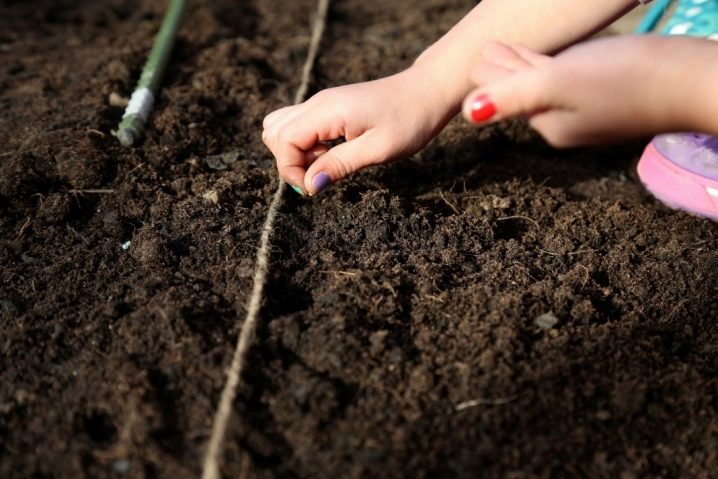
Sometimes they purchase ready-made rosette seedlings. Such planting material is used in the second half of May. It is advisable to choose a dry day with sunny weather. The spacing of the bushes should be from 0.25 to 0.3 m.
Short freezes for rosette seedlings are almost not dangerous.
Growth points will have to be left above the ground. The soil must be thoroughly tamped. Freshly planted plants are watered abundantly, but they tend to avoid exposing the roots. In order for the creeping tenacious to develop normally, it also needs to be watered regularly. It is necessary to suppress the uncontrolled spread of this plant.
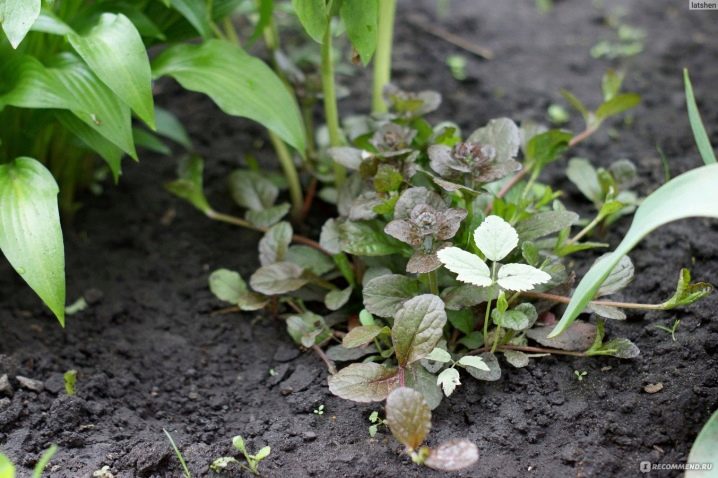
The period is critical when there are no leaf plates yet. At this point, full protection from the sun's rays is important. As soon as the rosettes begin to grow actively, irrigation is almost stopped. It is needed now only at high temperatures or against the background of a long absence of precipitation. The area allocated for the plant is advised to be fenced with stones pressed into the soil; it is also useful to break off the inflorescences, which allows you to preserve the spectacular appearance of the plantings.
It must be borne in mind that the creeping tenacious is not lawn grass. It is trampled down very easily and quickly, and not only by people, but also by pets. After a single walk, the culture dies irreversibly, or at best it takes a long and difficult time to recover. All varieties of this plant are suitable for planting during the entire warm period, and they can be transplanted at the same time. Clods of earth from temporary containers must be taken out entirely, excluding damage.
It is especially difficult if the seedling has no roots. Then it is previously placed in a medium-sized container with soil. This container is carefully immersed in water. This technique allows you to evenly distribute the entire mass. Rooting is carried out in the shade for 12-15 days, after which the plant can be planted.
It is recommended to feed the tenacious with wood ash. She also needs rotted manure and compost. You can also use peat. All these fertilizers do not have to be applied at the root. They can be sprinkled on the stem and foliage.


Good companions for the creeping tenacious are:
-
fern;
-
host;
-
geranium;
-
the Rose.
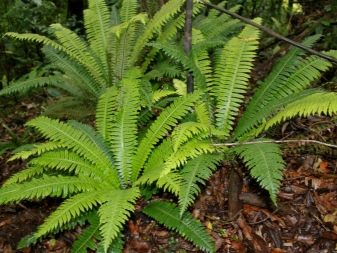

If the soil and air humidity is too high, the culture can be attacked by fungi. In this case, rotting of the roots and surface parts of the plant is likely.
The culture will develop worse and will not bloom, and the formation of daughter rosettes will also stop. The foliage will turn yellow at first, and then fall off altogether.
Root rot is expressed in the appearance of a gray bloom on the rhizomes. And also spots of brown and brown tones will appear on them. All infected areas of the plant are destroyed by cutting them off with sharply sharpened blades. The tool is disinfected before starting and at the end of work, as well as moving between plants.Each slice is sprinkled with charcoal.
Healthy plants must be protected with fungicides. Along with the classic Bordeaux liquid and copper sulfate, you can also use Topaz, Fundazol or Acrobat. Slugs and snails pose a danger to the creeping tenacious, and other insects bypass it; sprinkling with crushed eggshells helps to avoid invasion. In advanced cases, molluscicides help to fight pests; in calmer situations, a mustard solution or crushed hot pepper is used (they are pollinated by the affected plants).

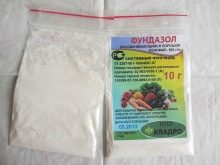
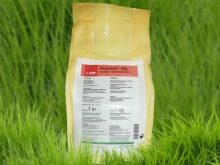
Reproduction
Breeding this kind is not a problem even for beginners. Seeds of the creeping tenacious are sold almost everywhere. But we must remember that seed breeding does not allow you to preserve varietal properties. Valuable subspecies of the plant must be bred vegetatively. Already in early spring, you can divide the bush, making sure that in each division there is a viable fragment of the rhizome.
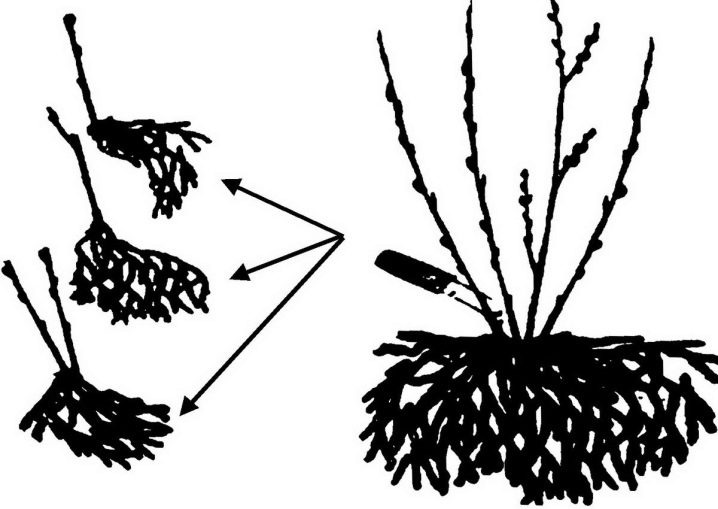
You can separate the sockets after flowering. The signal of readiness is the appearance of a "mustache". The rosette method can be used further, until the end of autumn. From 1 adult bush, it will be possible to take up to 15 units of planting material.
Seedlings obtained in this way are placed in increments of 25-30 cm.
This gap will be quickly filled by newly formed daughter rosettes. Deepening of growth points is unacceptable. They should be raised slightly above the ground. All soil around plants must be compacted. Watering should be carried out regularly until new foliage appears, focusing on the drying out of the earth.
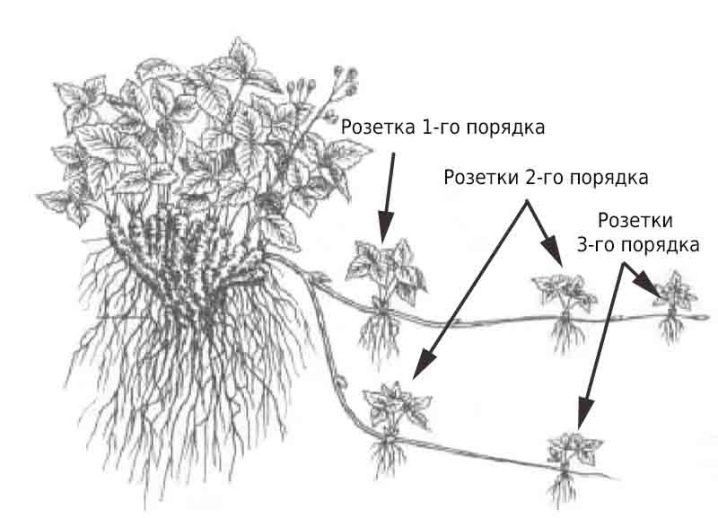
Use in landscape design
You can plant a creeping tenacious in the same way as ordinary ground cover crops. Usually it completely covers the entire area provided. Although such a plant can grow well in the light, the scorching sun has an extremely negative effect on it. Experienced decorators use Ayuga to prepare a variety of compositions. Soft, beautiful rugs are a great backdrop for tall trees and spreading shrubs.
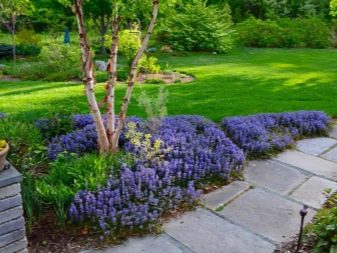
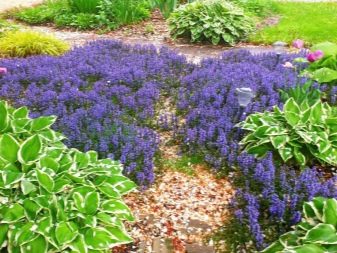
Such a plant is excellent in the design of areas where lawn grass cannot grow or dries up. It is used when arranging the foundations for alpine slides. It must be remembered that this species is capable of suppressing neighboring plants. If the shoots are not removed in a timely manner, it will act like a normal weed. From varieties with soft flexible trunks, you can arrange ampel compositions; then the culture is planted in hanging pots or in ground planters.
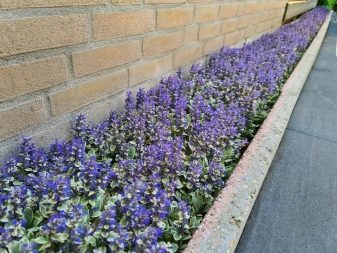
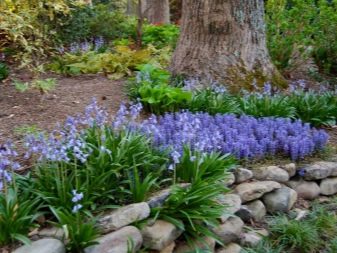







































































































The comment was sent successfully.